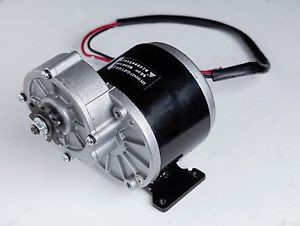I’m close to having the first phase of this train-building exercise completed. Here is a video of the (mostly) completed engine running on the track:
I’m in the debugging phase now. I have a mostly complete engine and set of tracks. I expect to find a number of problems that will need addressing and tweaking, but I’ll work through those as they become apparent.
Staying on Track
The first set of problems that became immediately apparent have to do with keeping the train on track – literally. There are some locations on the track where the engine jumps the track on a consistent basis.
I’m tuning the track so the engine can run in a clockwise direction, mainly to avoid having to climb a rather steep section of the track if it were going in the other direction. What I’ve noticed is that the tendency of the engine to jump the track is dependent on that front left wheel.
As the engine approaches the curved section of the track, the front left wheel is forced to turn when the wheel flange contacts the inside of the rail. Since my track is not completely level, there are some sections where there is more weight on the front wheels than there is in other sections. If there’s not enough weight on the wheel, it can easily climb the rail and go off track.
I suppose one solution would be to replace the flange on that wheel with a flange that’s larger in diameter. But I’d have to completely replace the wheel and find a v-pulley with a larger flange. Another solution might be to add weight to the engine on the front to help keep the wheel from climbing.
With a little experimentation, I found that I could adjust the track by shimming sections to help keep a consistent weight at all sections of the track. That seems to work, although I’ll learn more as time goes on.
Chain Jumping
Another problem is that the drive chain has a tendency to jump off the sprocket. This could be caused by incorrect chain tension or by the drive and slave sprockets not being properly aligned. It also can be caused if the drive sprocket is too small.

The 350 Watt drive motors I used have built-in gear reductions. I picked these motors in part because I needed the motor shaft to turn at a certain speed to drive the engine. The motors came with a chain sprocket already attached. Unfortunately, the attached sprocket has only nine teeth. This doesn’t provide enough contact with the chain to keep the chain from jumping the sprocket.
I found some replacement sprockets that match the chain size that contain thirteen teeth instead of nine. I’ve ordered these sprockets. When they arrive, I’ll swap out the sprockets (maybe having to add links to the chains to make them longer). I fully expect that this will solve the jumping problem. More on this when I’ve made the changes.
Update
The thirteen-tooth sprockets finally arrived. I removed the nine-tooth sprockets from the motors and replaced them with the thirteen-tooth sprockets. The sprockets fit just fine, and the change in the chain path did not cause any interference with the chassis. That was one of my concerns – that by changing the chain path it would interfere with the chassis. If that had happened, then I’d have to reposition the motors somehow to restore the required clearances.
As expected, however, the existing chains now were too short to accommodate the larger sprockets. I had to add a few links to the chains to make them long enough. Fortunately, I had anticipated this and had ordered a few extra links when I ordered the sprockets, so that wasn’t a problem.
On the first test of the upgraded drive train one of the chains immediately came off the drive sprocket while the neighbors were watching. But all it required to fix was an adjustment of the motor to get the alignment and chain tension correct. After that, it seemed to work fine.
In the two weeks that followed, there have been four different children who have logged maybe fifty laps around the track with almost no problems. The only two problems were when a small limb fell from a tree onto the track near a track joint. The pilot wheel caught the limb and climbed over the rail, causing it to come off track. Another lesson learned: always inspect the track before every run.
The other problem was when I opened the train house doors, but didn’t latch them in the open position. When the train came through the back door (under remote control and out of line of sight), it caught the edge of the partially opened door with a resounding thunk. ‘Nother lesson learned.
Next Steps: Add amplified speakers and electronics to the on-board computer to play sound files to create the chug-chug sound and maybe a train steam engine whistle.